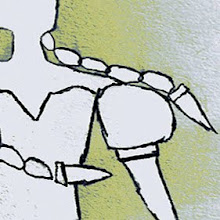Gros plan!
David Chambon is a French photographer who captures insects covered in hundreds of tiny water droplets.
« Amateur photographer for 10 years, I started with a Panasonic FZ-30 Bridge that made me really love photography. Then I bought my first digital SLR. I started reading on several photo forums and understood the importance of good material and especially good technique! So I learned the basics on the net. Today I am truly passionate about nature and spend my free time face down in the wet grass to capture what mother nature has best to offer. Over time I specialized in wildlife macro photography.» –David Chambon
Sorry for the translation, which is a bit wobbly, and thank you to Google translate.
Sorry for the translation, which is a bit wobbly, and thank you to Google translate.
Lentilles de contact
Morning dew
Mouche
Mouche à m...
Robber fly
Sans titre
The fly
Two famous sites (!) have also featured David Chambon's insects covered in water droplets: This is colossal and Enpundit. The selected photos are different from here though. And see David Chambon's flickr gallery page.
Collier de perles
Errors, like straws, upon the surface flow;
he who would search for pearls must dive below.
Guillaume de Salluste du Bartas (1544–1590)
he who would search for pearls must dive below.
Guillaume de Salluste du Bartas (1544–1590)




























.jpg)

.jpg)

.jpg)
.jpg)
.jpg)
.jpg)
.jpg)
.jpg)
.jpg)
.jpg)
.jpg)
.jpg)
.jpg)
.jpg)















